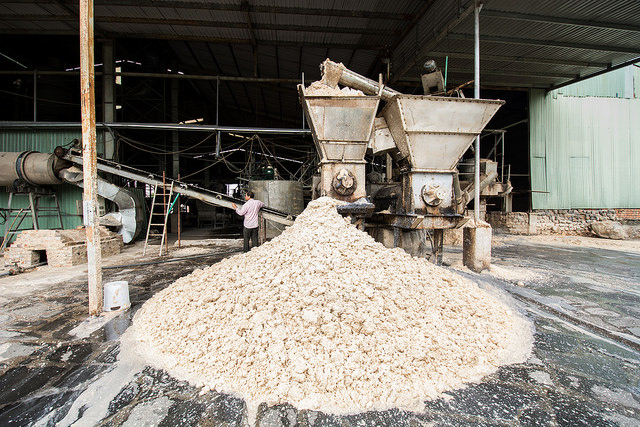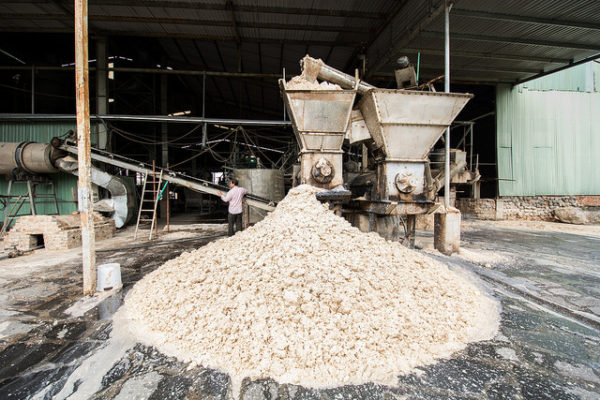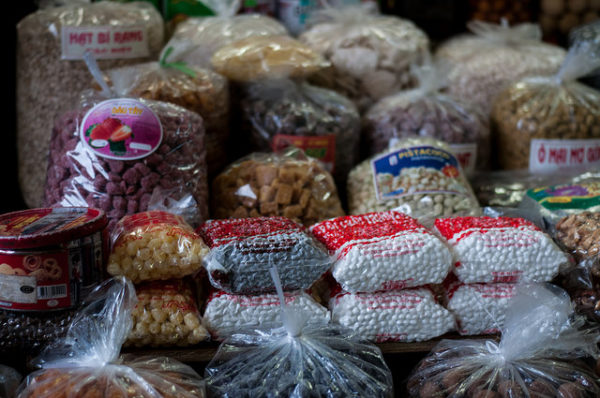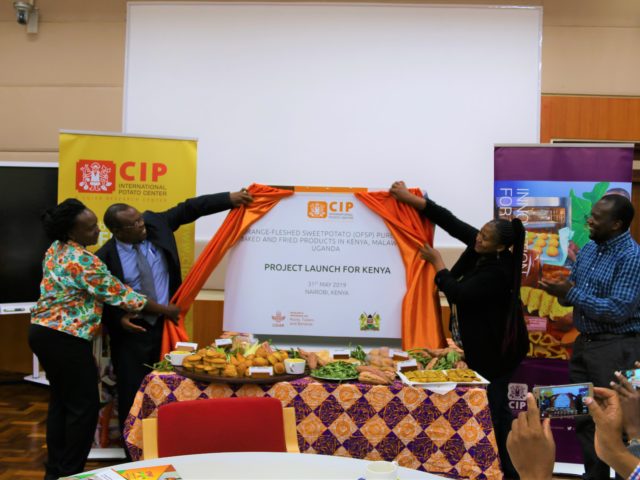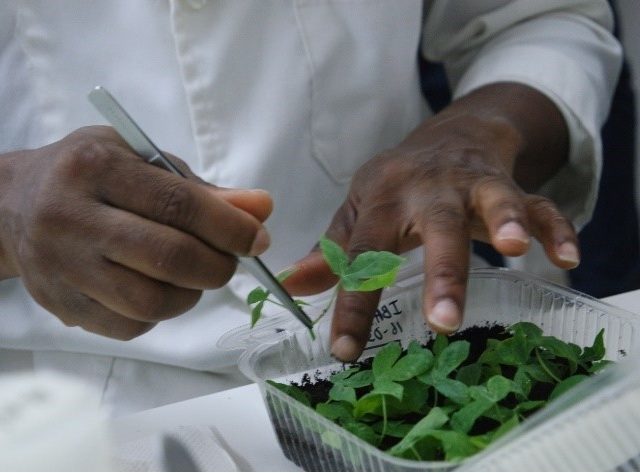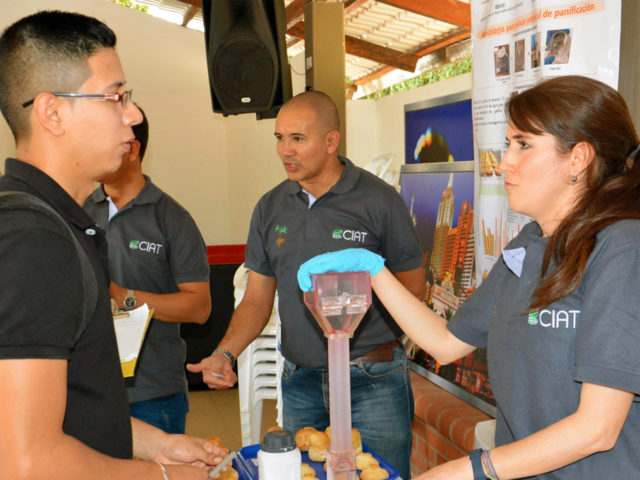As the global cassava industry continues to grow, new processing technologies are helping factories to reduce energy losses.
The farming and post-harvest processing of cassava is a major economic activity throughout much of South-East Asia, Africa and Latin America.
In Africa and Latin America, cassava is a staple food for 500 million people and is increasingly processed into ready-to-cook or ready-to-eat products. Demand for these foods is rising as a result of changing expectations by growing middle-class consumers and urban populations.
In South-East Asia cassava processing for starch in particular is a major market driver, with Thailand being the world’s largest exporter of cassava products, including starch and chips.
In many countries, the processing of cassava takes place in small- and medium-scale factories where process inefficiencies, in particular energy losses, are significant and impact on both production costs and the environment.
Considering the high potential for growth of the cassava industry, driven by growing populations and economic development, it is critical to optimize cassava processing technologies to ensure the industry progresses in a sustainable manner.
To improve cassava processing technologies, the CGIAR Research Program on Roots, Tubers and Bananas (RTB) conducted a benchmarking study of cassava starch and flour technologies in several countries, as part of the larger 2013-2015 project “Driving livelihood improvements through demand-oriented interventions for competitive production and processing of roots, tubers and bananas”.
The study was conducted by a team from the International Center for Tropical Agriculture, the International Institute for Tropical Agriculture and CIRAD with support from Univalle and Clayuca in Colombia, Kasetsart University and KMUTT in Thailand, and Thai Nguyen University in Vietnam.
Findings confirmed that artificial drying of cassava is faster than sun drying and hence a key factor to increase the production capacity of factories. However, research shows that artificial drying represents 70-75% of the total energy used by a typical cassava starch factory, making it a key area to focus on improving energy efficiencies.
‘Flash drying’, the most suitable type of drying for cassava starch and flours, is efficient at large-scales, with 80-90% energy efficiency. However, at small-scales (less than 50 tons of product per day) where the majority of cassava processing occurs, energy efficiency is only 40-60% due to inadequate dryer designs.
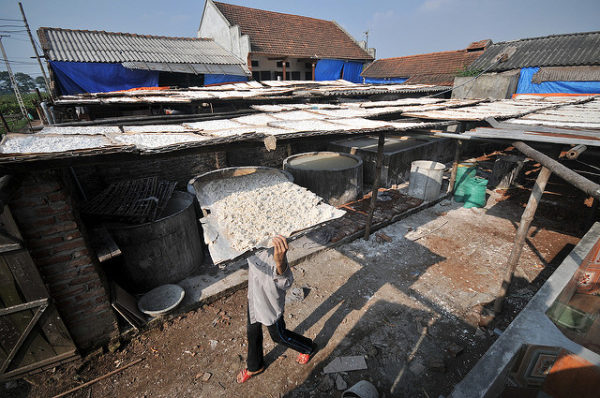
Sun drying, as seen here in Vietnam, is less commonly used in favor of artificial ‘flash drying’. Photo: N.Palmer/CIAT
To develop improved drying technologies to make the process more efficient and environmentally sustainable, the project launched a subsequent study using computer-based simulations of the flash drying operation that proved such improvements to small-scale dryers are possible.
A numerical model of flash drying to simulate and compare the drying process at small and large scales was developed, followed by methods to determine the optimum dimensions and operating conditions of flash dryers for different production capacities.
Critically, this led to the development of guidelines to design energy-efficient flash dryers that can help cassava factories or equipment manufacturers reduce their energy losses.
These innovations are now available to interested stakeholders in the cassava processing industry worldwide.
To share findings from the project with key stakeholders from the private and public sector, including cassava processing factories, equipment manufacturers, universities and government agencies, a workshop was held in Bangkok, Thailand from 2 – 4 December, 2015.
The workshop brought together participants from countries including Thailand, Vietnam, Myanmar, Indonesia, Philippines, Colombia, Nigeria, Tanzania, France and Germany, providing a valuable opportunity for networking and planning future collaborations on the development of the cassava industry.
The event was organized by CIRAD, Kasetsart University and Biotec, with financial support from RTB, SEA-EU-NET and the Embassy of France in Thailand.
The dissemination of the project’s findings will continue through capacity building events in other regions (Latin America, Africa) and the design and construction of a prototype flash dryer based on the newly developed guidelines for energy efficiency.
Read more
Learn more about the outcomes of the workshop and the project in the workshop report.
Access the project’s research findings and numerical models in the recently published (July 2016) paper, ‘Pneumatic Drying of Cassava Starch: Numerical Analysis and Guidelines for the Design of Efficient Small-Scale Dryers‘, published in the journal, Drying Technology: An International Journal.
